(being where I worked in Rome)
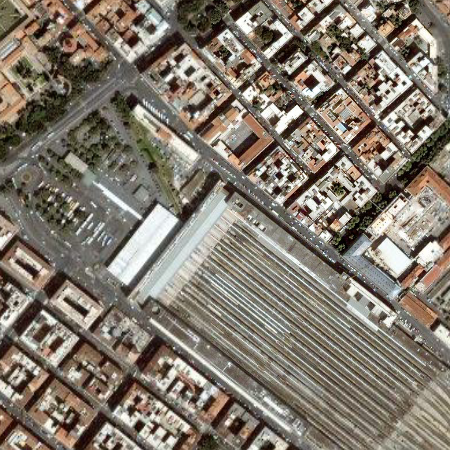
Here is the Enjoy Rome office, north of Termini on Via Marghera. There was an earlier Enjoy Rome office on Via Varese near the corner of Via Castro Pretorio which is also in this map but I didn’t work there.
(being where I worked in Rome)

Here is the Enjoy Rome office, north of Termini on Via Marghera. There was an earlier Enjoy Rome office on Via Varese near the corner of Via Castro Pretorio which is also in this map but I didn’t work there.
(being places where I worked in Cambridge & Somerville)
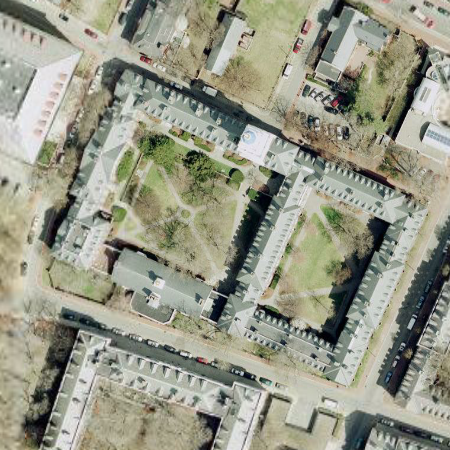
Here is Lowell House, which I cleaned as part of dorm crew. I cleaned other houses at various points, but Lowell’s the first one I cleaned, I think.
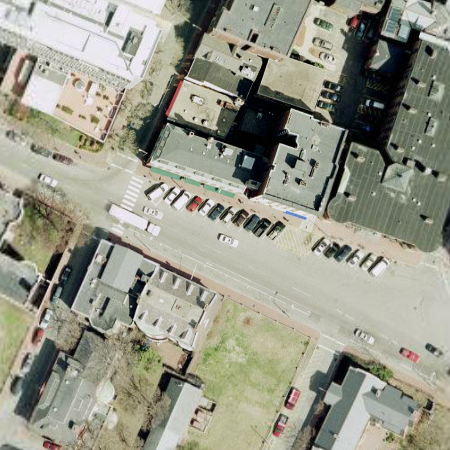
Here is the Let’s Go office (just north of Lowell House) where I worked for two summers as well as a good amount of other time during the school year. There was another summer spent working for Let’s Go in Rome, but that more properly belongs in a cartography of habitations.
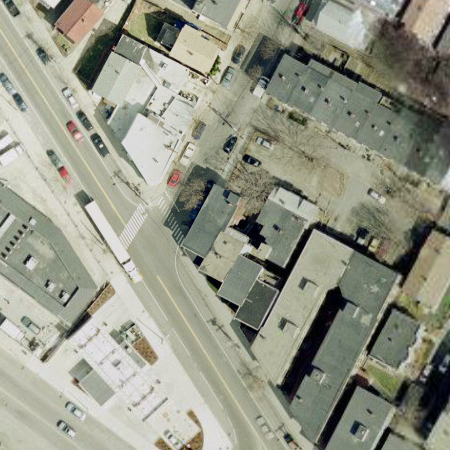
Here is the first Cognoscenti office, just north of Cambridge in Somerville. Later it moved much farther north into Winter Hill, but I don’t know precisely where that was. Here I drew maps and did other things. I later worked for Cognoscenti in Rome, but I don’t know if that counts.
(being places where I worked in Illinois)
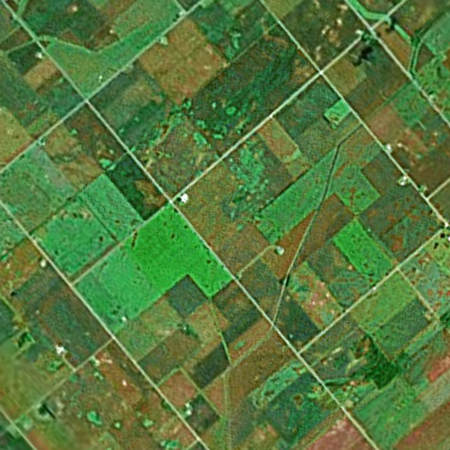
This is imprecise, because I don’t remember which cornfields I actually worked in as a detassler. But all cornfields look the same from above, which is presumably why Google doesn’t dignify them with high-resolution photos.
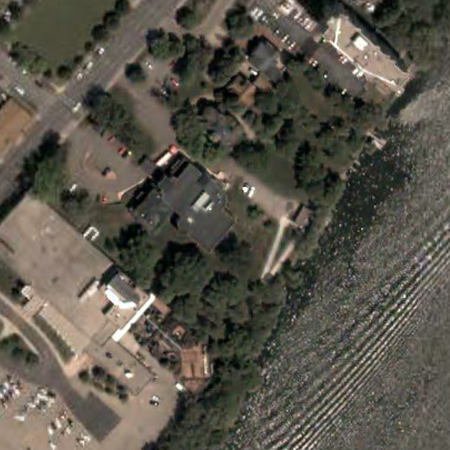
Here is the Burpee Museum of Natural History, where I was a reptile keeper and did various other things in my youth.
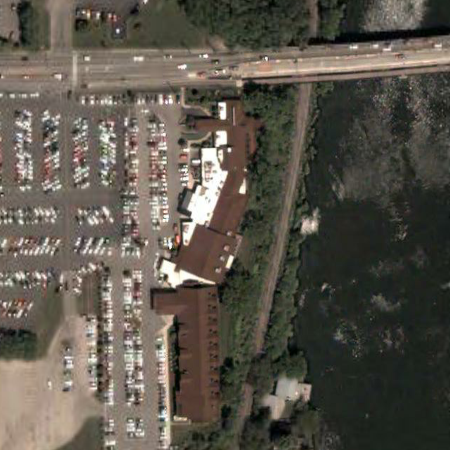
Here, farther north on the same river, is Cliffbreakers, a restaurant where I was a banquet server/busboy. It didn’t have the hotel attached to the southern end when I worked there.
“From which I later concluded that if there is one thing as noisy as suffering it is pleasure, especially when there is added to it – failing the fear of having children, which could not be the case here, in spite of the far-from-convincing example in the Golden Legend – an immediate concern with cleanliness.”
(Proust, Sodom and Gomorrah, trans. John Sturrock, p.11)
* * * * *
“Then said he, ‘Make me with child, and after to be delivered, that I may know what pain my mother suffered.’ Which by craft they gave to him a young frog to drink, and grew in his belly, and then he said, ‘But unless ye make me to be delivered I shall slay you all.’ And so they gave him such a drink that he had a vomit and cast out the frog, and bare him on hand that because that he abode not his time it was misshapen, which yet he made to be kept.
Then for his pleasure he set Rome afire, which burned seven days and seven nights, and was in a high tower and enjoyed him to see so great a flame of fire, and sang merrily.
He slew the senators of Rome to see what sorrow and lamentation their wives would make.
He wedded a man for his wife. He fished with nets of gold thread, and the garment that he had worn one day he would never wear it nor see it after.
Then the Romans seeing his woodness, assailed him and pursued him unto without the city, and when he saw he might not escape them, he took a stake and sharped it with his teeth, and therewith stuck himself through the body and so slew himself. In another place it is read that he was devoured of wolves. Then the Romans returned and found the frog, and threw it out of the city and there burnt it.”
(The Golden Legend, the life of Saint Peter)
* * * * *
“Many writers allude to it in Naaman’s case; that Constantine the head of the whole earth had leprosy no one mentioned; at least none of his fellow citizens, but perhaps some foreigner or other, to be given no more credence than that other fellow who wrote about wasps building their nest in Vespasian’s nostrils, and about the frog taken from Nero at birth, whence they say the place was called the Lateran, for the frog (rana) is concealed (latere) there in its grave. Such stuff neither the wasps themselves, nor frogs, if they could speak, would have uttered! [I pass over the statement that boys’ blood is a remedy for leprosy, which medical science does not admit;] unless they attribute this to the Capitoline gods, as though they were wont to talk and had ordered this to be done!”
Lorenzo Valla, Discourse on the Forgery of the Alleged Donation of Constantine, trans. Christopher B. Coleman, pp.153–155)
<
p align=”center”> *
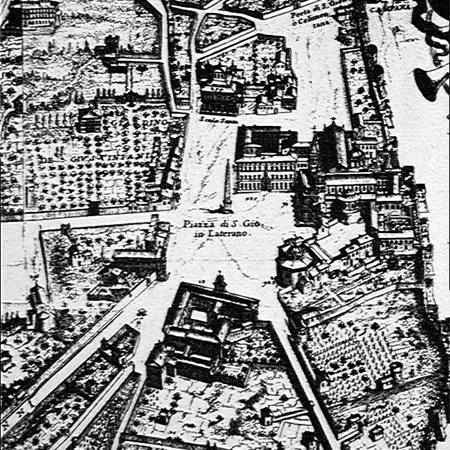
(G. B. Falda, Pianta di Roma (detail), 1676)
* * * * *
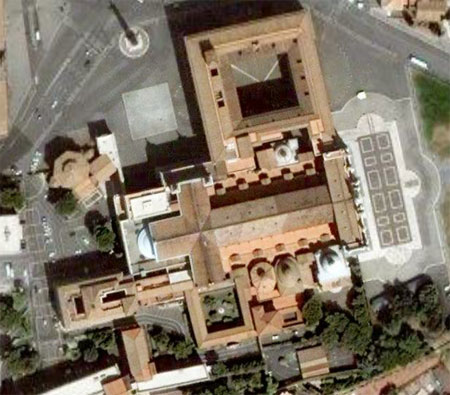
(Google Earth of the same)
ANATHEMATIZATION OF THE WORLD
IS NOT AN ADEQUATE RESPONSE TO
THE WORLD.
(Donald Barthelme, Snow White, p.184)
“When I read Michael Cunningham’s Pulitzer Prize-winning novel, The Hours, I admired it as a thoughtful, delicately considered engagement with the literary past and a sensitive articulation of various kinds of loss. Curiously, though, when I sat in a dark theater and watched the movie version, I sobbed and moaned as though I were being viciously beaten. And although my cinematic reaction was physically extreme whereas my literary response was emotionally mild, I would say it is Cunningham’s novel, and not the film it spawned, that is of greater value. I have had any number of interesting conversations about the book, and phrases from it stay with me (‘without her there is no world at all’), but of the movie I can now remember precious little beyond its having left me sobbing.”
(Wyatt Mason, review of Colin McGinn’s The Power of Movies: how screen and mind interact. Why don’t they give him more space?)
“ ‘A new-born child has no teeth.’ — ‘A goose has no teeth.’ — ‘A rose has no teeth.’ — This last at any rate — one would like to say — is obviously true! It is even surer than that a goose has none. — And yet it is none so clear. For where should a rose’s teeth have been? The goose has none in its jaw. And neither, of course, has it any in its wings; but no one means that when he says it has no teeth. — Why, suppose one were to say: the cow chews its food and then dungs the rose with it, so the rose has teeth in the mouth of a beast. This would not be absurd, because one has no notion in advance where to look for teeth in a rose.”
(Ludwig Wittgenstein, Philosophical Investigations, pp. 221–222)
(cf. the interpretation of Matmos)
“We all have our own talents, our special gifts. Sometimes these gifts seem to come to us from our forefathers, but more often it is difficult to trace their origin.
A goatherd, perhaps, amuses himself by counting little pebbles and doing sums with them. He becomes an astoundingly quick reckoner, and in the end is a professor of mathematics. Another boy, as an age when most of us care only for play, leaves his schoolfellows at their games and listens to the imaginary sounds of an organ, a secret concert heard by him alone. He has a genius for music. A third – so small, perhaps, that he cannot eat his bread and jam without smearing his face – takes a keen delight in fashioning clay into little figures that are amazingly lifelike. If he be fortunate he will some day be a famous sculptor.
To talk about oneself is hateful, I know, but perhaps I may be allowed to do so for a moment, in order to introduce myself and my studies.”
(Jean Henri Fabre, introduction to Fabre’s Book of Insects, adapted, whatever that means, from Souvenirs Entomologiques)
(see also)
At the Greek Font Society – a Didot, a Bodoni, and an italic made to accompany the Didot.
(from Metropolis, via BLDGBLOG).